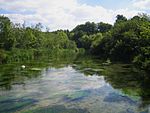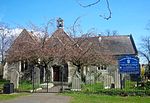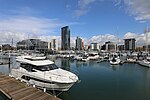Griffon Hoverwork

Griffon Hoverwork Ltd (GHL) is a British hovercraft designer and manufacturer. It was originally founded as Griffon Hovercraft Ltd in 1976, based in Southampton. The firm set about the development of its own product range, launching its first diesel-powered hovercraft, the 1000TD, in 1983. During 2008, Griffon Hovercraft was acquired by the Bland Group; in the following year, it was merged with two other hovercraft specialists, Hoverwork Ltd and Hovercraft Consultants Ltd; the combined entity was branded Griffon Hoverwork Ltd. The company's primary facility is based along the River Itchen in Southampton. At present, Griffon Hoverwork supplies a range of hovercraft, boats and other specialised marine services to governments, NGOs, and private companies for use in humanitarian, search and rescue, security and commercial roles. Being one of the oldest hovercraft manufacturers, Griffon Hoverwork's products have been used in various parts of the world. By August 2016, the company's existing market share extended into 41 countries while around 180 hovercraft have been delivered to end users. Perhaps its most commercially successful vehicle has been the Griffon Hoverwork 8000TD hovercraft.
Excerpt from the Wikipedia article Griffon Hoverwork (License: CC BY-SA 3.0, Authors, Images).Griffon Hoverwork
Hazel Road, Southampton Woolston
Geographical coordinates (GPS) Address Nearby Places Show on map
Geographical coordinates (GPS)
| Latitude | Longitude |
|---|---|
| N 50.901111111111 ° | E -1.3825 ° |
Address
Yacht Tavern
Hazel Road
SO19 7QZ Southampton, Woolston
England, United Kingdom
Open on Google Maps








